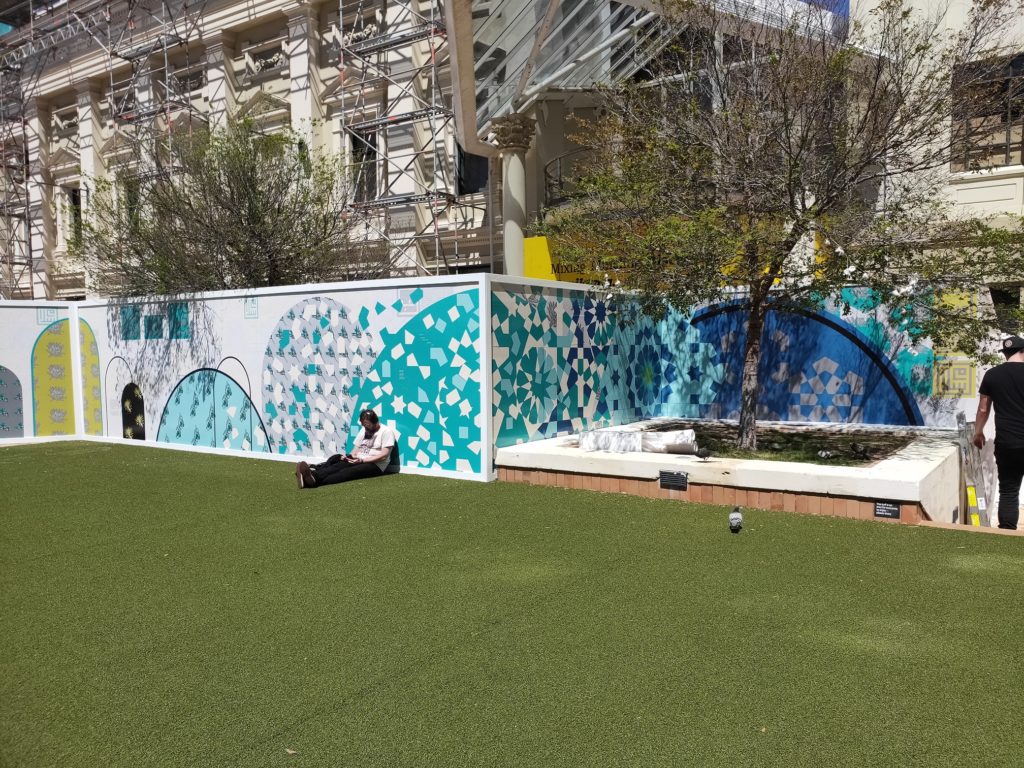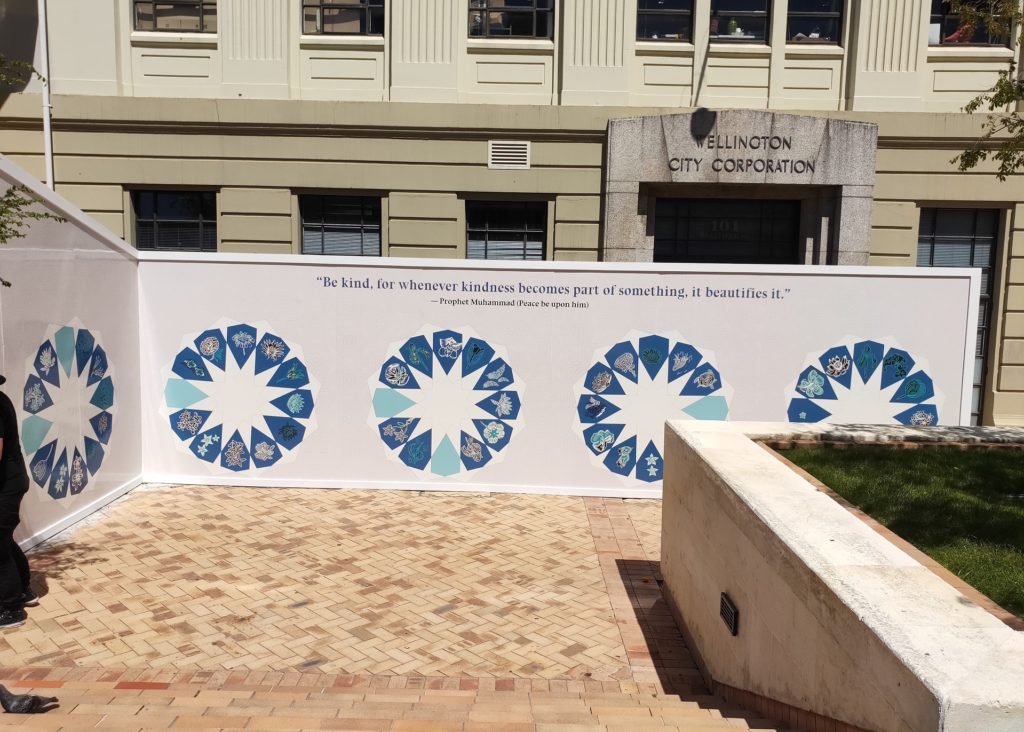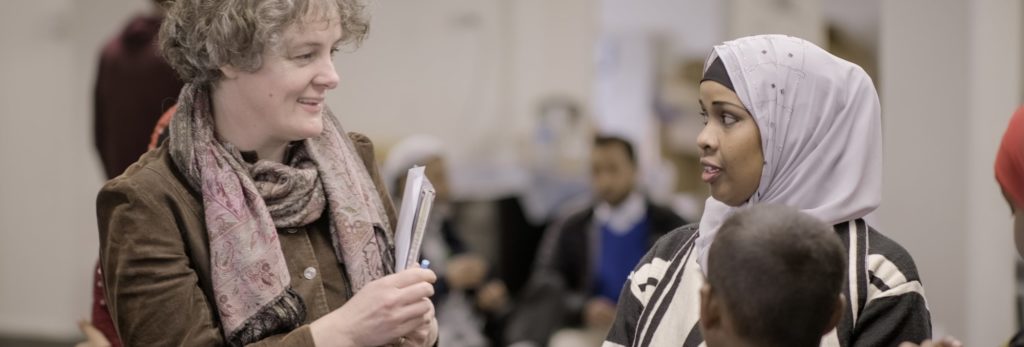Weaving Hope: The story behind the mural
In 2019 Te Rourou worked on a temporary mural which was placed in the heart of Wellington, Te Ngākau Civic Square.
Weaving Hope tells the story of loss and hope. This work acknowledges the grief over the tragedy that happened in Christchurch on 15 March 2019, and presents a vision and hope for a more unified, accepting and diverse Aotearoa. The mural has been weaved together by local mural artist Ruth Robertson-Taylor, but the vision and key elements come directly from the Muslim community.
This work was co-created with the Muslim Students Association (VicMuslim), the International Muslim Association of New Zealand’s Committee, members of the Kilbirnie mosque community, and One New Zealand’s Muslim Society (Salam Network).
The Business and Foundation supported the creation of this mural, with site support from Wellington City Council.
“At [One NZ] we’re committed to fostering a deeply embedded culture of inclusion. One that values the full diversity of our people, our customers and the communities we serve. This mural reflects our desire as an organisation to take positive action from a devastating event, and demonstrate the kindness and generosity that sits at the core of Aotearoa. Out of tragedy must come unity.”
Antony Welton, Chair of the Te Rourou Board
About the Design
The name ‘Weaving Hope’, chosen by Iffah from VicMuslim, speaks to the vision of the artwork, and the wide range of artists and community members who helped weave together the final design.
Arches play a key role in the work, a nod to Islamic architecture, rainbows, and bridges. A strong shape, these arches are evocative of mosques, of bridging understanding, and of crossing boundaries.

The geometric features and Kufic script used in the design pay homage to traditional and modern Islamic art. They represent the love of science, geometry and the mystery of life in this culture, and feel familiar and welcoming to those of the faith.
In places the strong geometry fractures into pieces and shapes. This is symbolic of both disintegration and creation. The design is simultaneously destroyed and built from small elements, showing the dual nature and strong connection between these two forces.

Flowers feature strongly in the design. In the panel to the far right of the artwork each flower was hand carved by local Syrian furniture maker Mahmoud Shagouri, with the 51 martyrs from the tragedy in mind. The flowers come from various countries around the world, a reminder that Islam is a diverse global faith, and a faith practised in New Zealand.
There is a quote on the artwork, a feature all parties involved in the design wanted in the final work. It reads: “Be kind, for whenever kindness becomes part of something, it beautifies it.” Prophet Muhammad (peace be upon him).

About the Artists
Ruth Robertson-Taylor was the lead artist behind the work, but key elements have been contributed by local, national, and international contributors.

Ruth Robertson-Taylor (Gorse) has been actively painting public murals for nearly 10 years in the greater Wellington region. Working collaboratively with councils and communities, she shapes narratives that encapsulate the spirit of each art piece’s location. Her mural aesthetics can differ greatly from one to the next, but like all good public murals, each piece responds to the space and community they sit within. Ruth often works with different artists to co-create large collaborative artworks. Graphic designers Muhammad Waqas and Farhan Sarfraz worked with Ruth on the overall design scheme for this work.
Additionally, the Kufic script (Arabic text displayed in three boxes throughout the mural) was contributed by Muhammad Waqas, a local creative who belongs to the Kilbirnie mosque community. The Kufic script displays the words ‘peace’, ‘love’ and ‘unity’. Read more about Muhammad here.
The traditional geometric design that is repeated throughout the work was contributed by Farhan Sarfraz. Farhan is a graphic designer, a Programme Manager at One New Zealand, and part of the Salam Network.
The flower carvings portrayed on the far-right panel were created by the artist and Mahmoud Shagouri. Mahmoud is a resettled Syrian based in Porirua. In Syria he was an expert furniture maker. Ruth and Mahmoud worked on the carvings together bridging the language gap with google translate!
Surprise find elements (hidden phrases) were contributed by Asyraf ElGhazali, a visiting student from Malaysia, who we met through the consultation at the Kilbirnie mosque.

A lot of amazing people contributed to the final design, and these were a few reflections and hopes for the mural from the co-creation workshops we ran.
“I hope that this mural can show others the real message of Islam, which is peace.”
“We are many races, we are diversified, but we are still one.”
“This mural is a great way to bring us back to all of those positive emotions that we had, to the goals we might have set, those resolutions we put forward… and to bring us back to each other.”
A huge thank you to everyone involved in the project. We hope the mural makes viewers think, and can play a small role in building a more unified and hopeful future for all of Aotearoa.

